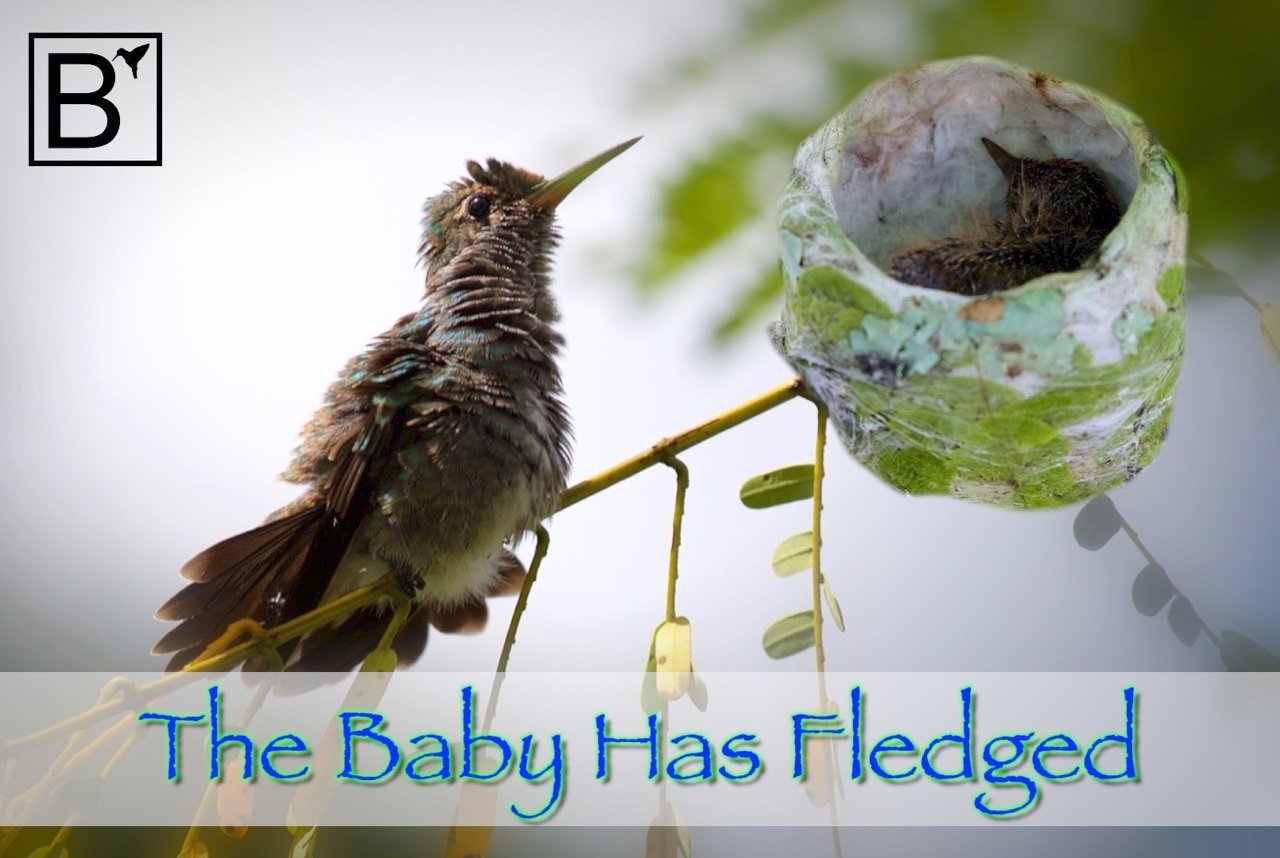
But personally they keep intriguing me. The fact that they weigh less than 5 grams, are able to slow down their heartbeat and metabolism during the night, can flap their wings more than 50 times a second and are able to fly backwards makes this hummingbird a wonder to behold.
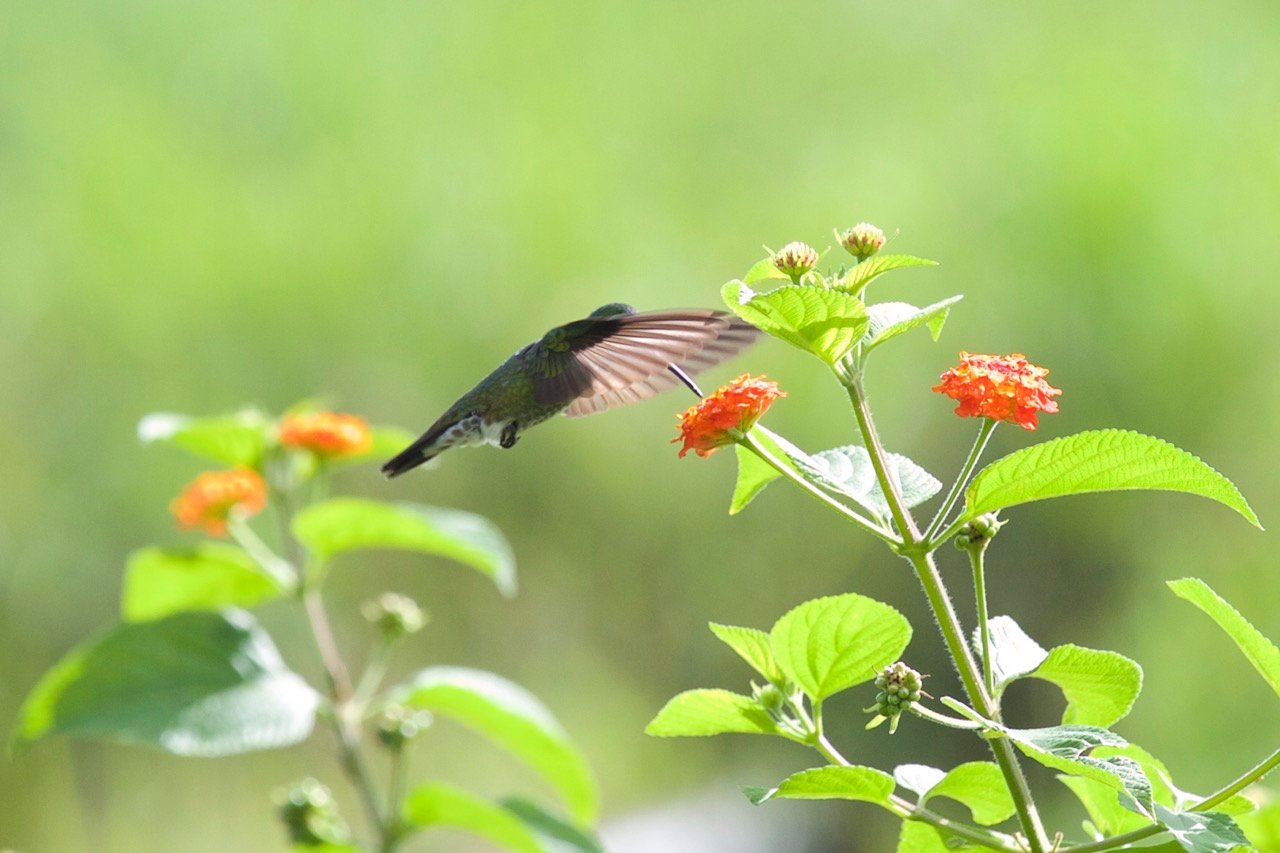
The mother started building her nest somewhere in November last year. It takes her 6 to12 days to do so. The male leaves immediately after mating. But initially hangs around to protect the territory. The nest is very sophisticated. She build it in this young mango tree less than two meters above the ground.

The the deep cup-shaped nest is made out of woven plant material. The inner of the nest is made out of very soft material like animal hair, feather down and fluffy seeds, like the seeds of milkweed. The outer is camouflaged with green moss. She strengthens the nest with spider webbing and other sticky material that allows the nest to expand as the chicks grow.
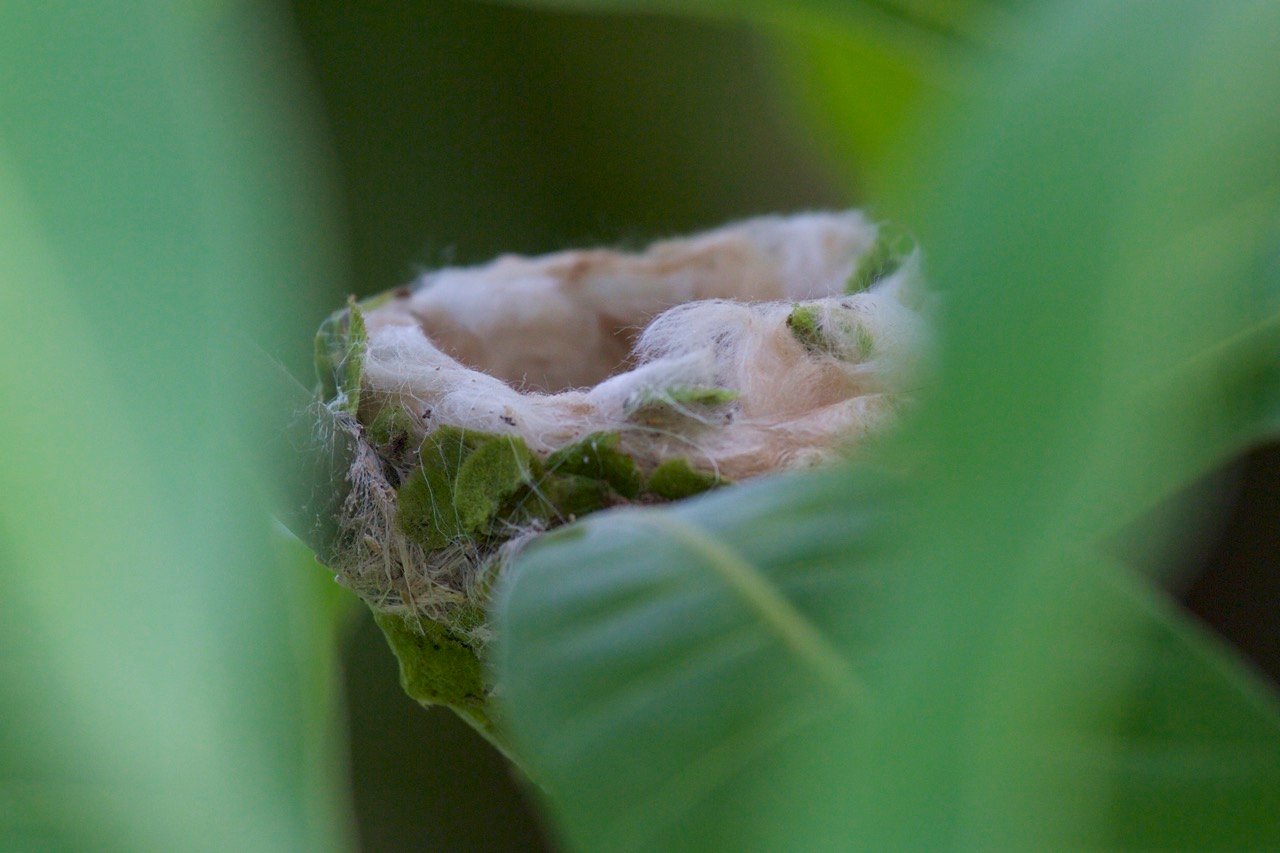
I wondered why she chose this mango tree. It’s quite exposed and in the wind the small tree swings like crazy. I was worried that the eggs might fall out.
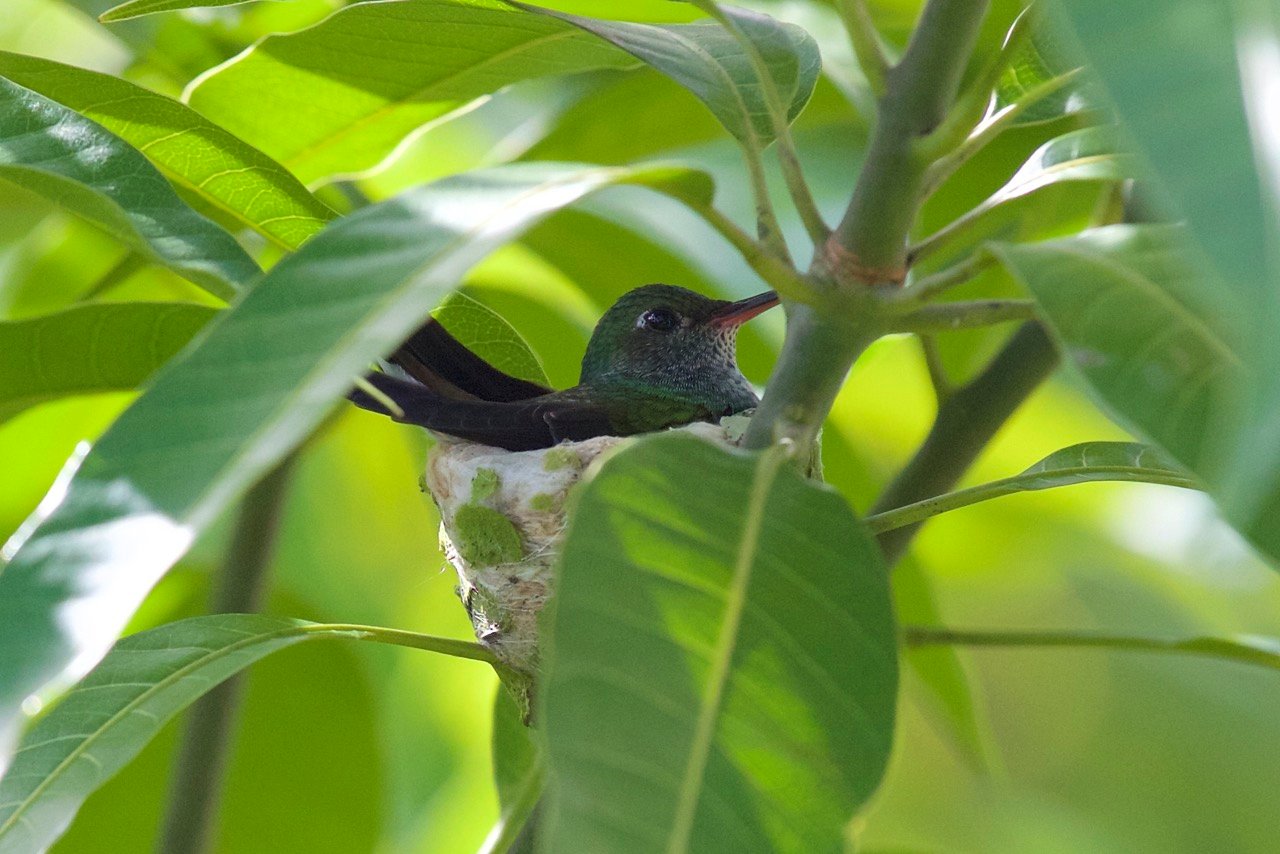
But I think that there’s definitely a reason behind it why she chose this tree. It sound perhaps crazy but my theory is that the swinging is important for the development of the young. The swinging simulates the flying. It’s a natural flight simulator. The hummingbird is the only bird that can fly backwards and sideways. These movements are perhaps learned and accustomed to, while the chick is on the nest.
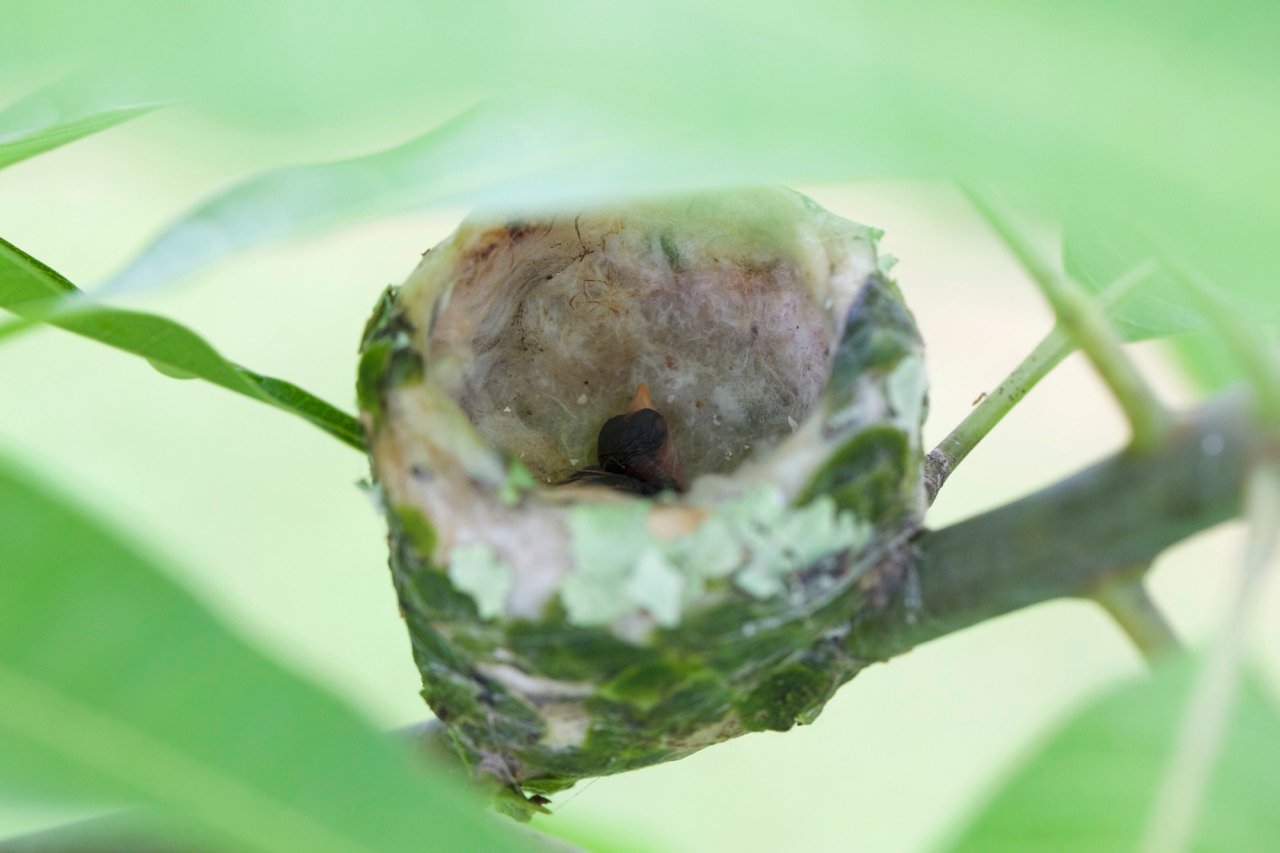
Christmas Day, a baby is born.
I don’t know when she laid her eggs but it must have been the first week of December. There were two but only one hatched. I have no idea what happened to the other one. The remaining egg hatched on Christmas Day. Initially I thought that there were two chicks because I didn’t dare to look too close. But alas.
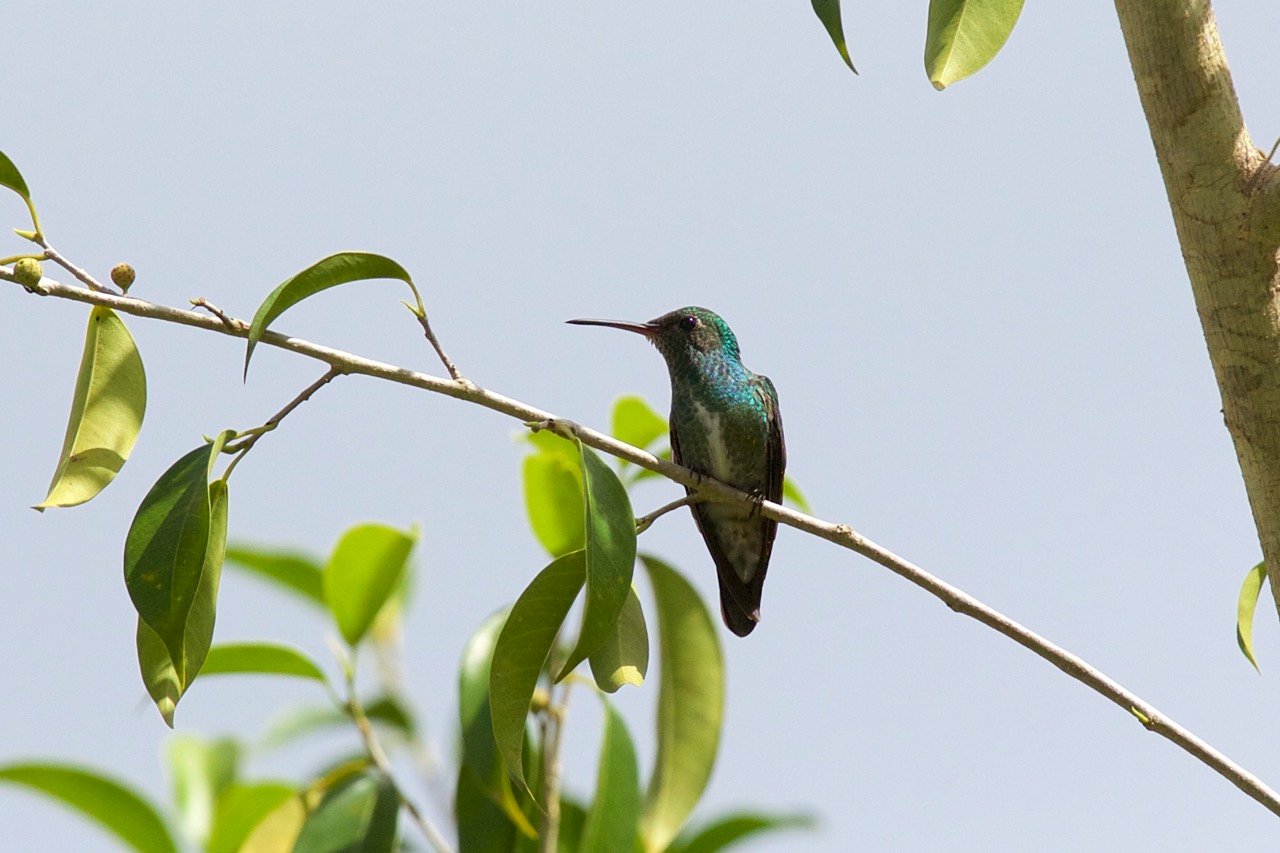
In the beginning the mother leaves the nest for very short periods. She has to eat of course but she must make sure that the eggs don’t cool down, even in the tropics.
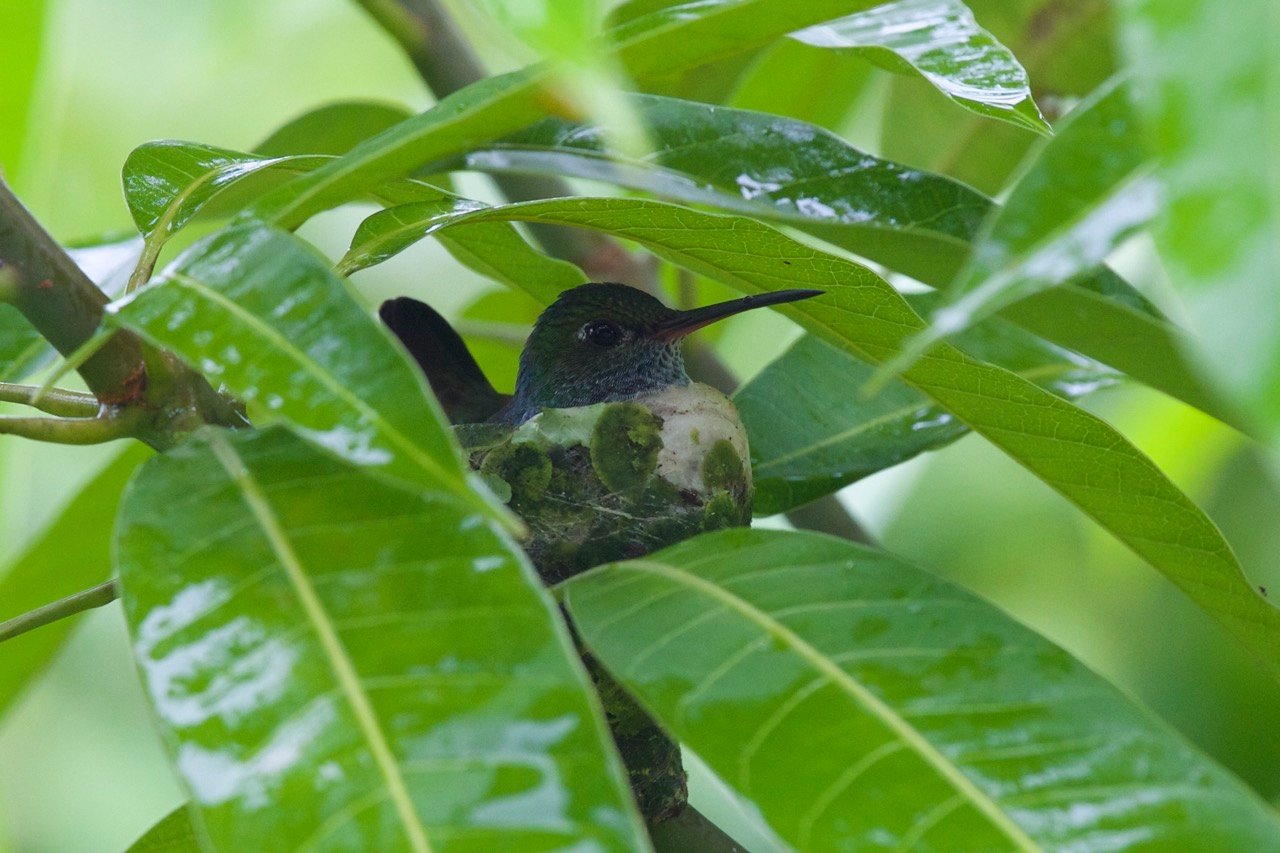
After hatching she stays away longer and longer. Now she’s really busy. She has to catch hundreds of insects a day to feed her young that demands more and more food. In this short video you can see her foraging on flowers (old material, it’s probably not even her but it could be) and feeding her chick.
As I wrote in older posts, hummingbirds can be ferocious little fighters. They are fearless if they are defending the nest from other birds and will attack other birds much bigger than themselves. And they always win. They also chase away other hummingbirds and butterflies that dare to eat from their favourite flowers.
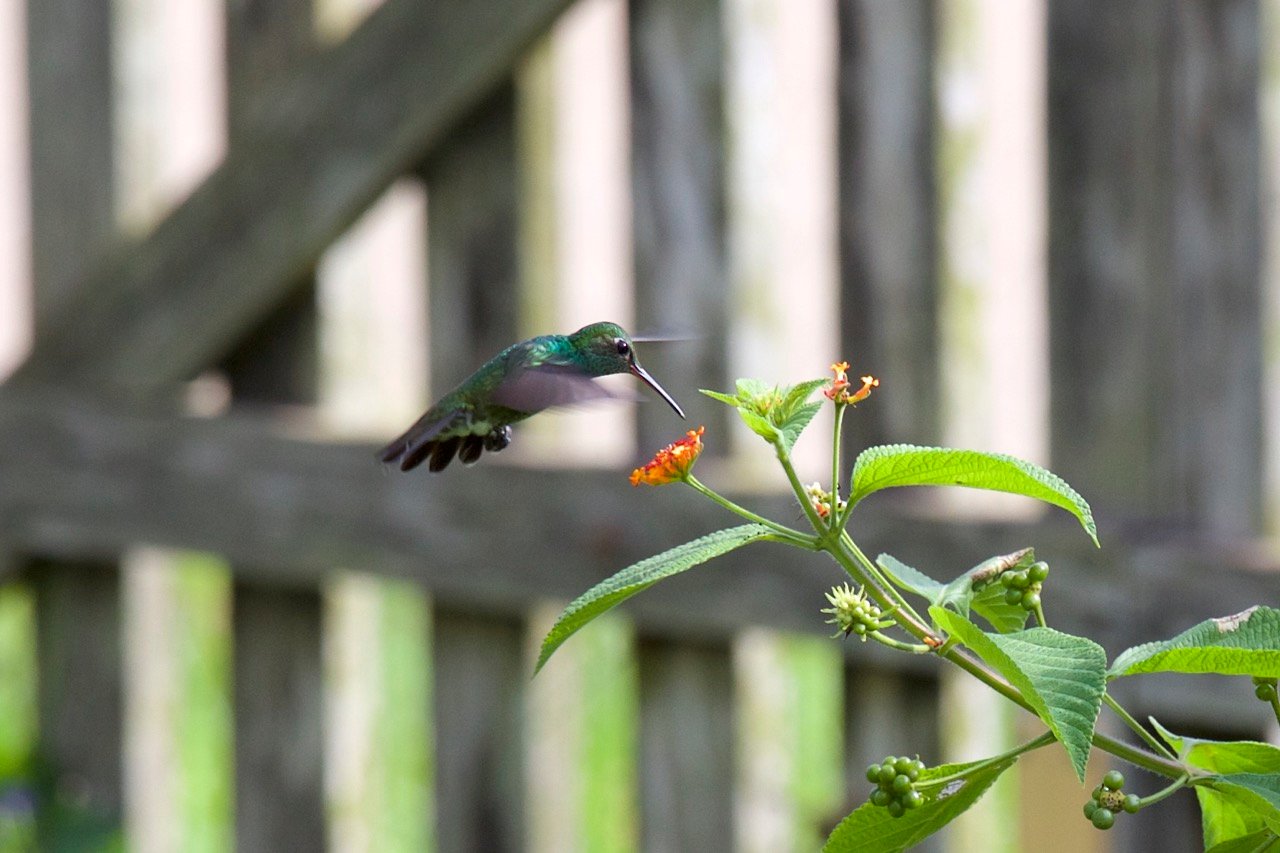
What was interesting is that she always flew off when I approached the nest a bit too close. But when I had to mow the lawn she would remain on the nest even if I was mowing around the tree and was less than a meter away.
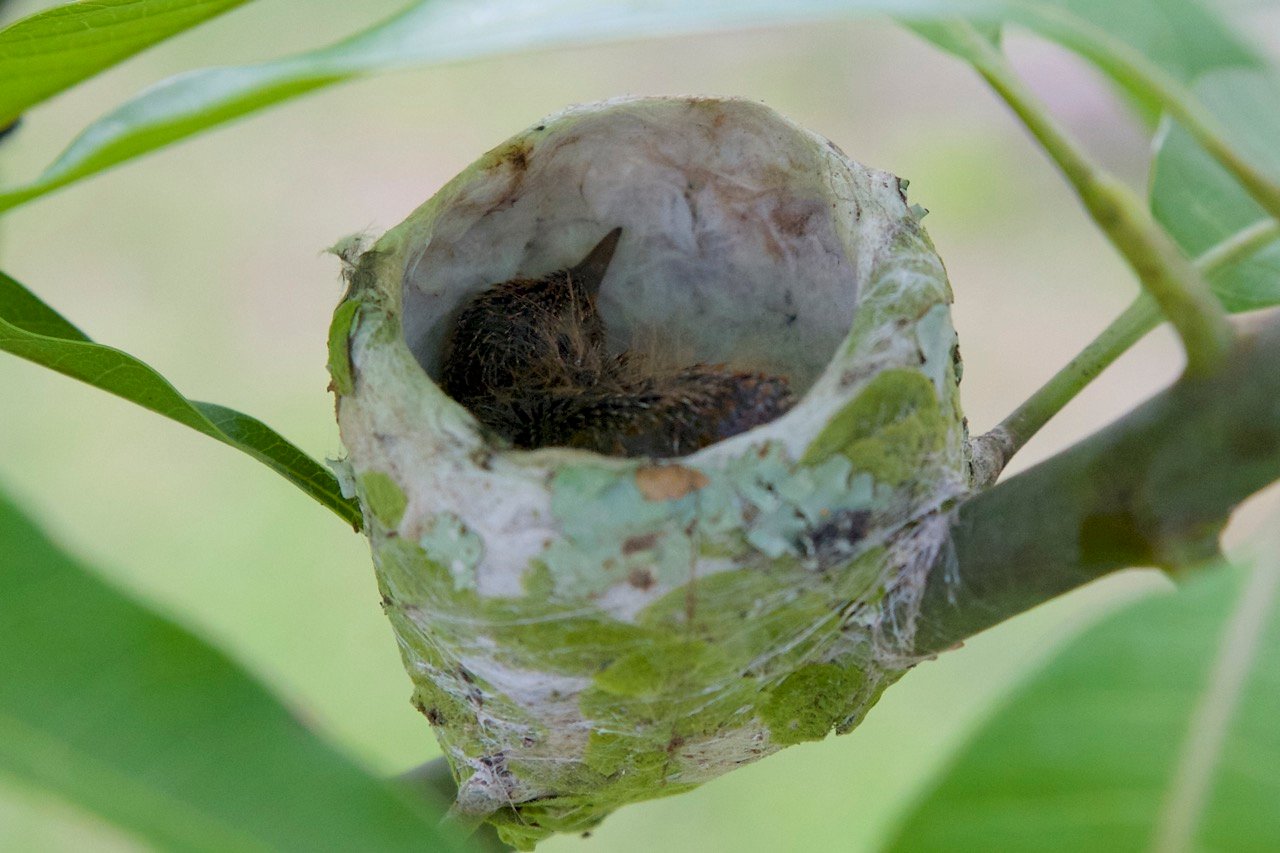
In this picture the young is 12 days old
During the last week before fledging, the mother started to call her young. Sometimes frantically flying around the nest and constantly calling it with a very fast tjirp. Then she would land in different corners from the garden and kept on calling it. This probably motivates the young to leave the nest.
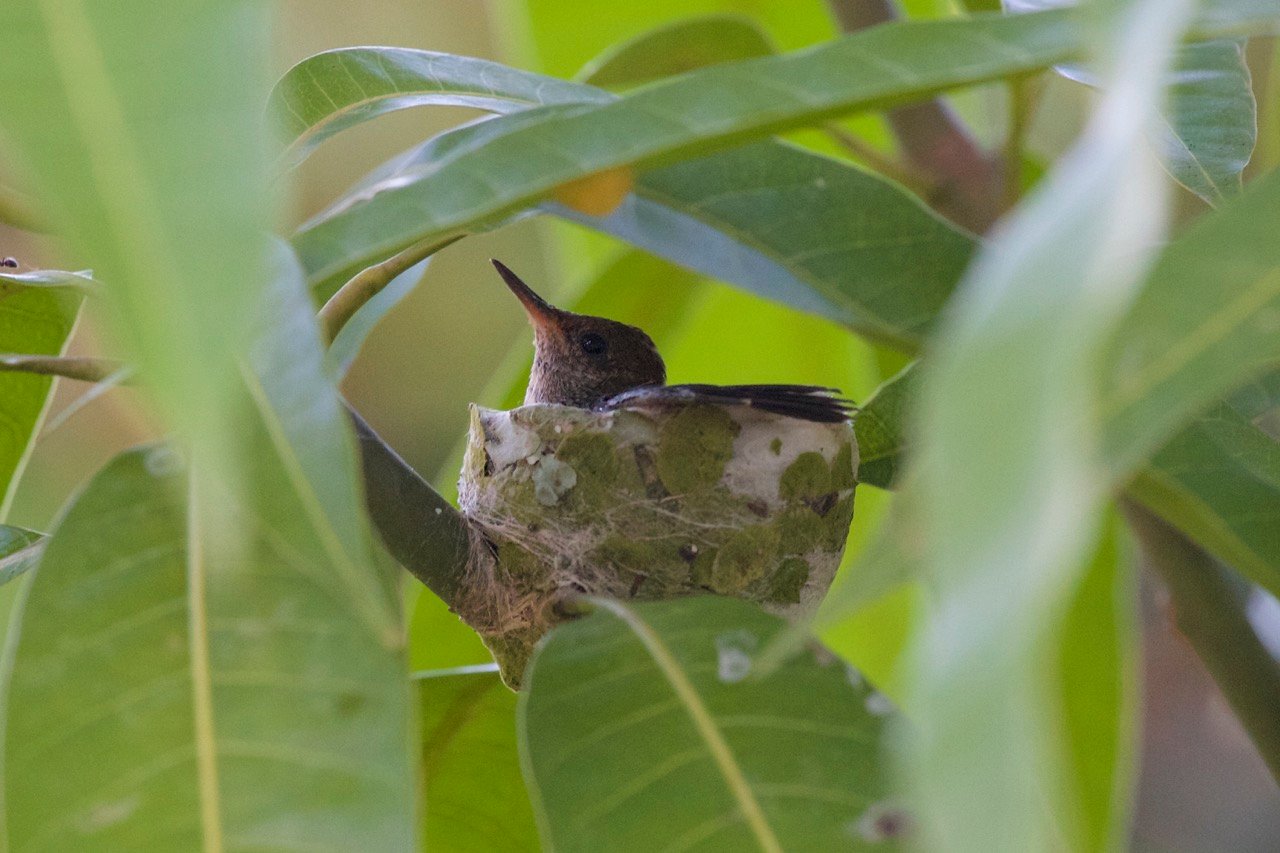
And in this picture it's 18 days old.
During the first two weeks the young only eats and sleeps. In the third week it's awake more often, curiously looking over the edge to see what’s going on in the world around him. During this period the mother can be away for quite a while. She now also leaves the chick alone during the night.
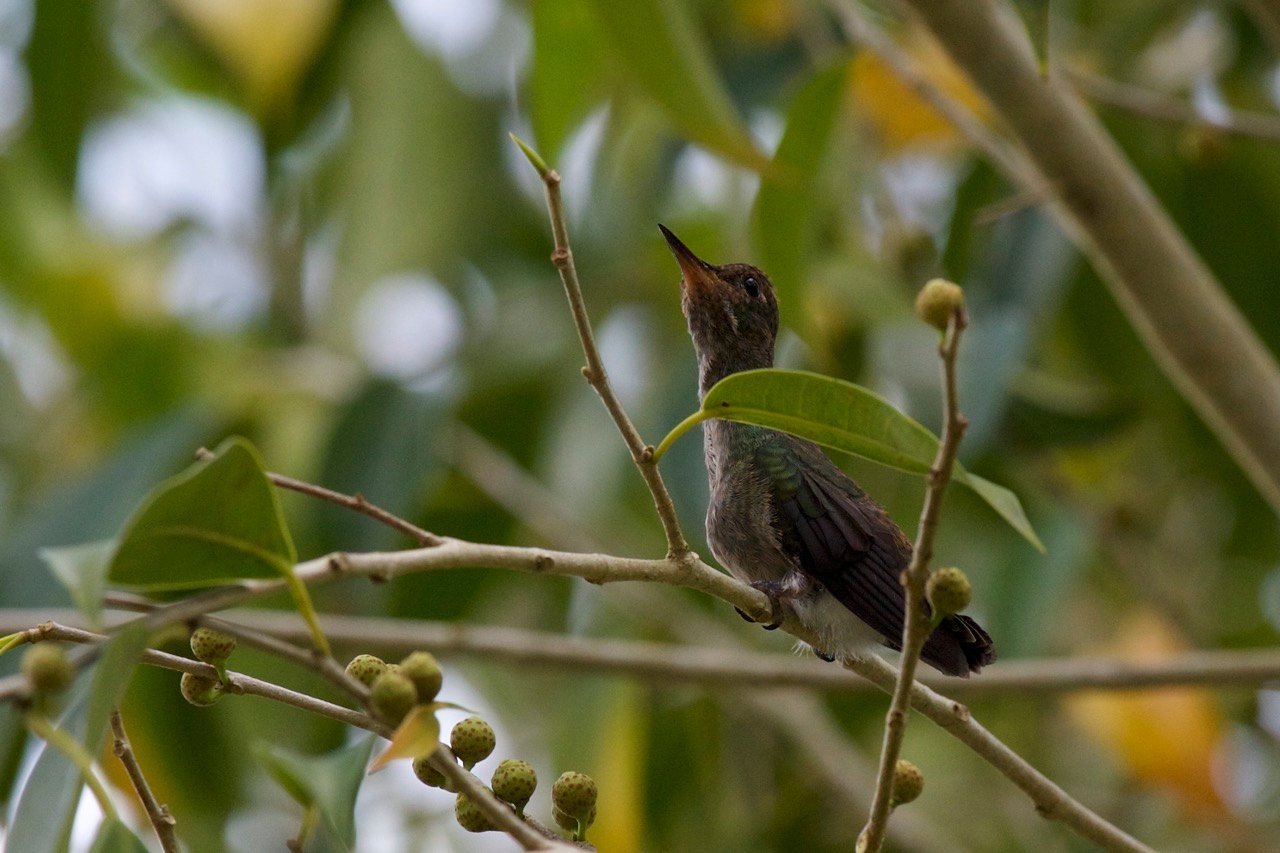
The day that it fledged, 22 days old.
The young fledged on the 22 day. That was last Tuesday. I unfortunately missed that. That morning it was still sitting on the nest but when I came back from some shopping it was gone! He never returned to the nest after that.
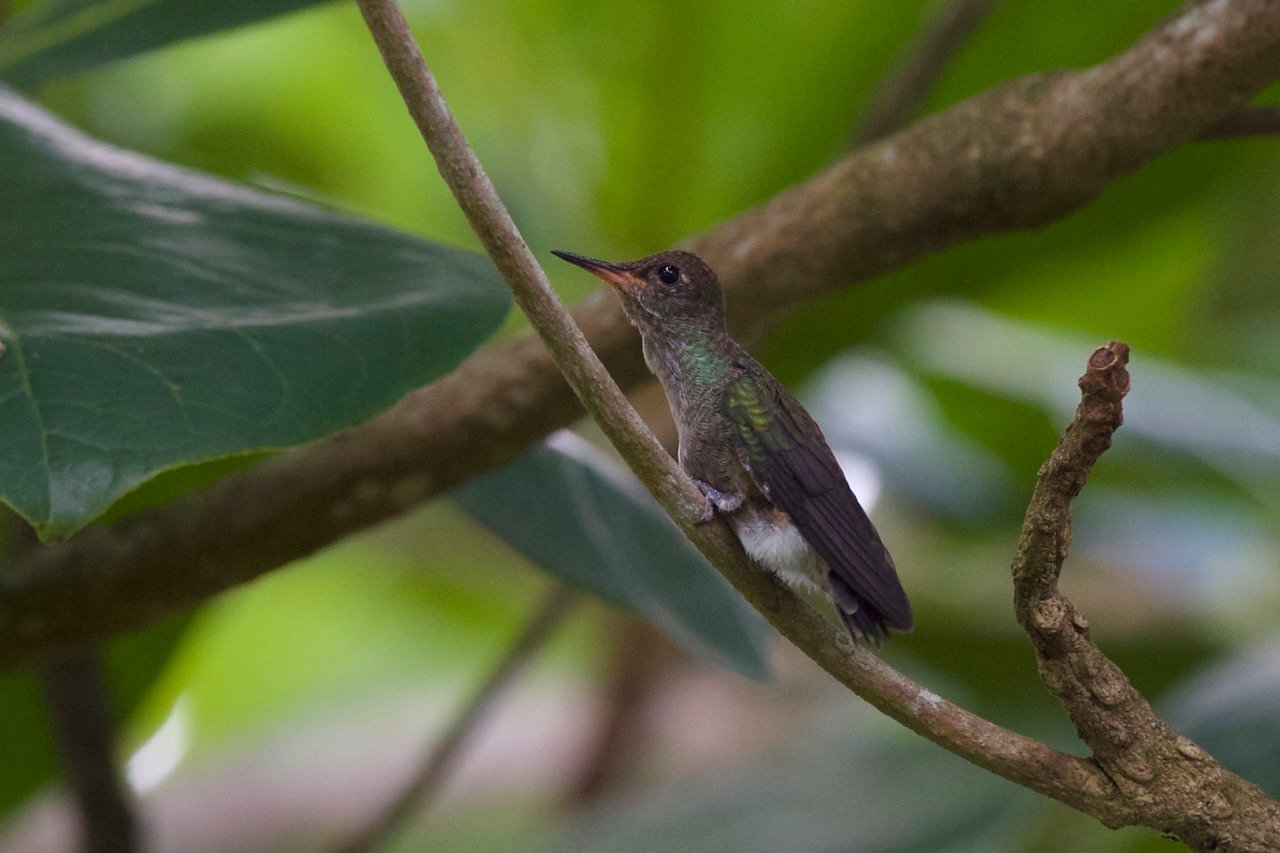
I say ‘he’ because I think it’s a male. It’s much bigger than mommy. I only managed to take a few photographs. I was not able to film it.
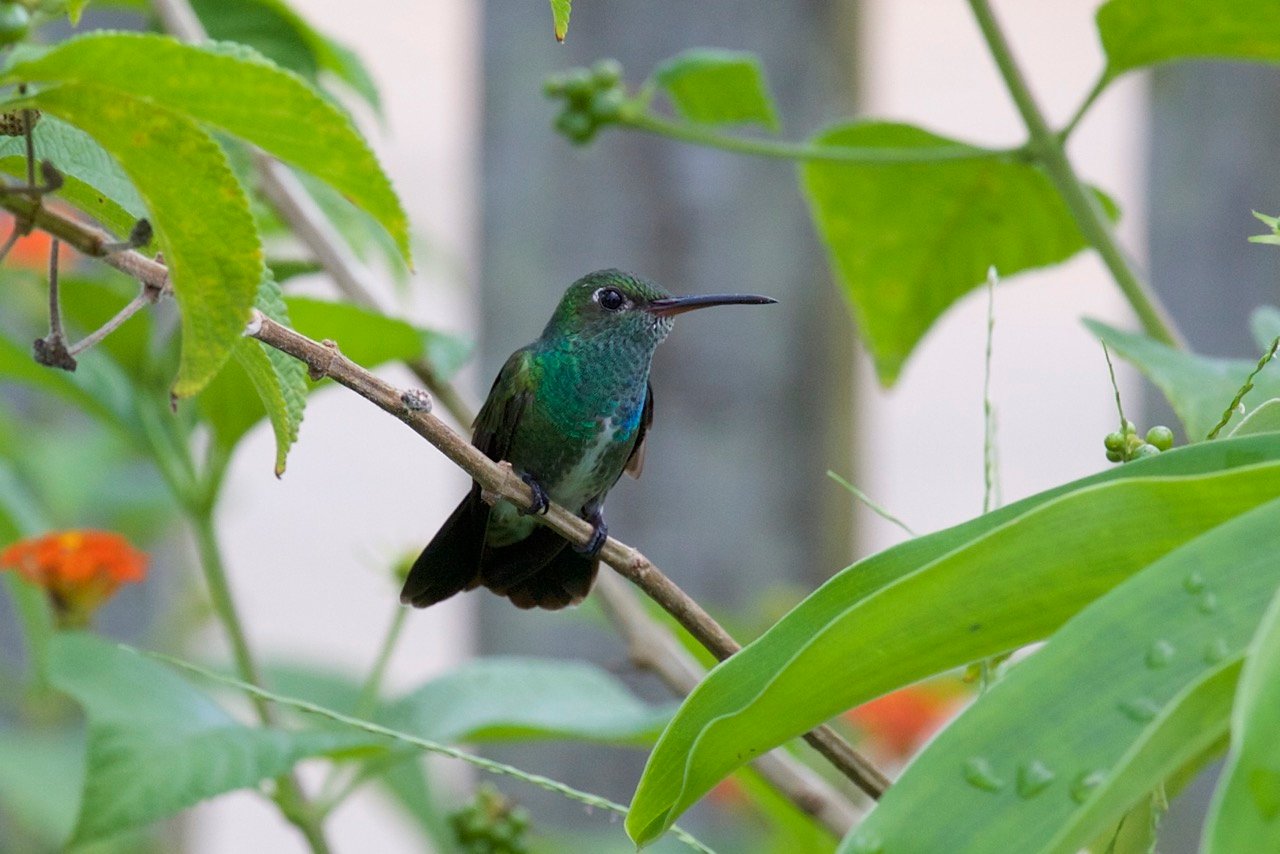
The proud mother
I did saw him fly that day. And as you would expect, the flying is a bit clumsy but they learn very fast. Their wings don’t flap as fast and they are a bit unstable in the direction that they are flying. The way that he flew reminded me of a bumblebee.
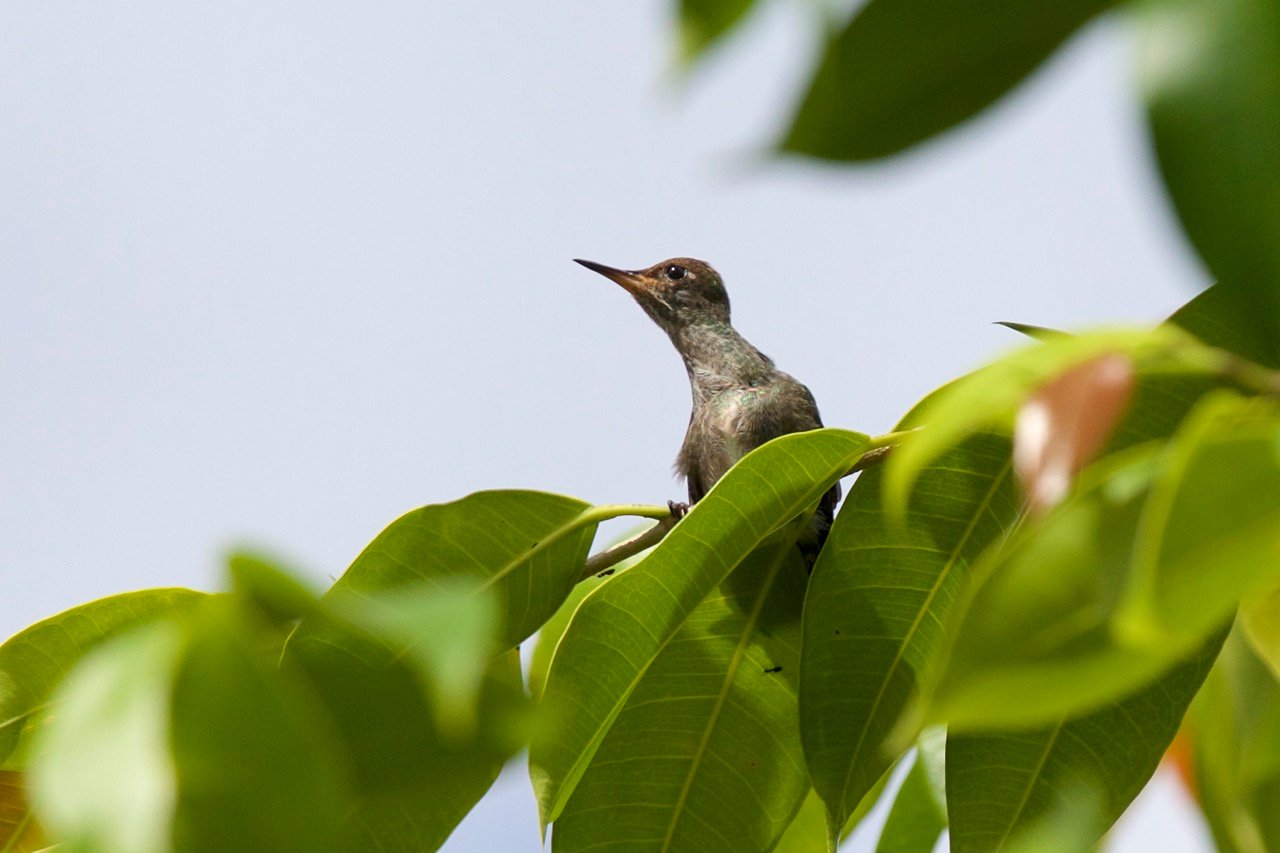
Occasionally I still see them but the mother is showing him all the other gardens in the neighbourhood as well of course. I don’t know if he’s allowed to stay in our garden or that the mother makes him leave her territory. We will see.
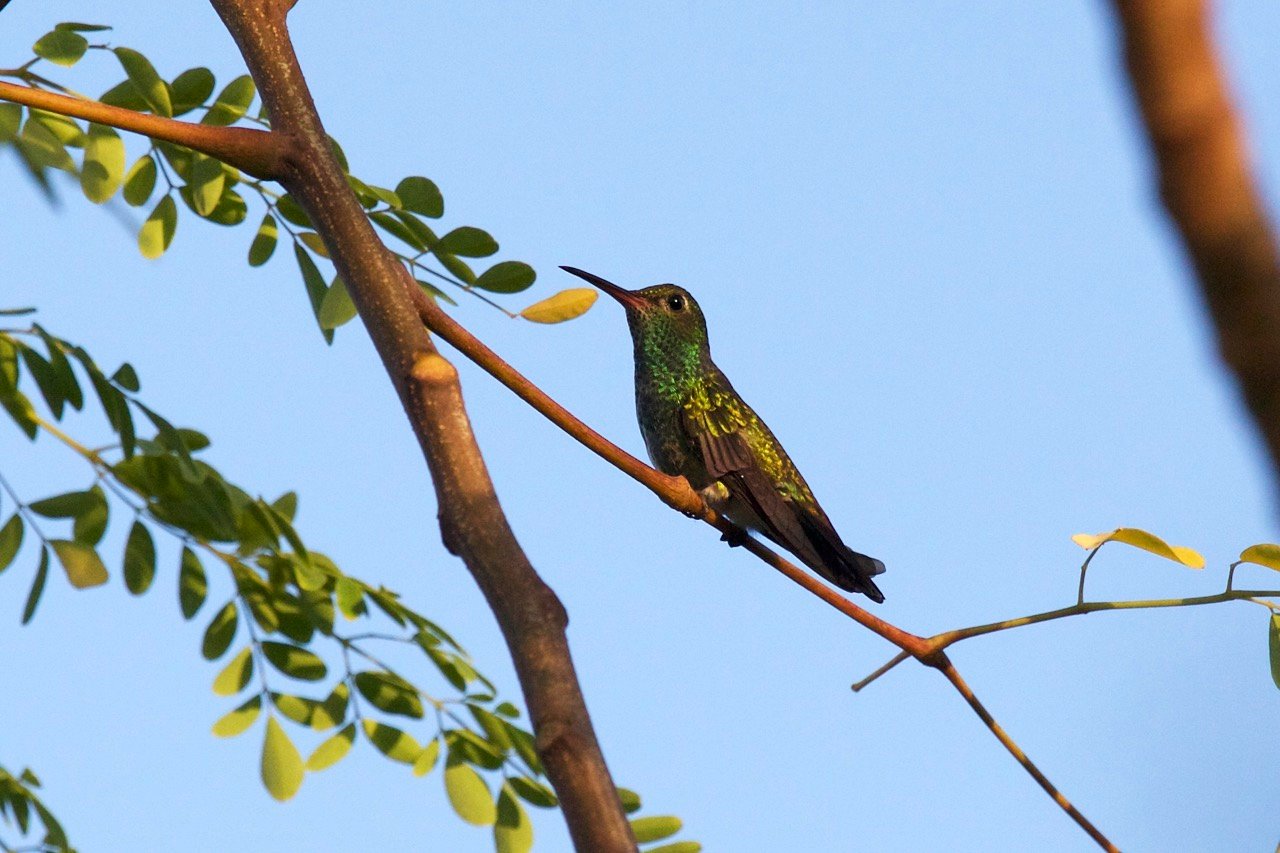
Well done mommy!!
That’s it. I hope you enjoyed this post and that I haven’t bored you to death with, yet again, more hummingbird stories and pictures.
Much love,
Gardenbsquared
Why not click here to read more inspirational and interesting posts by the other members of the ecoTrain.



